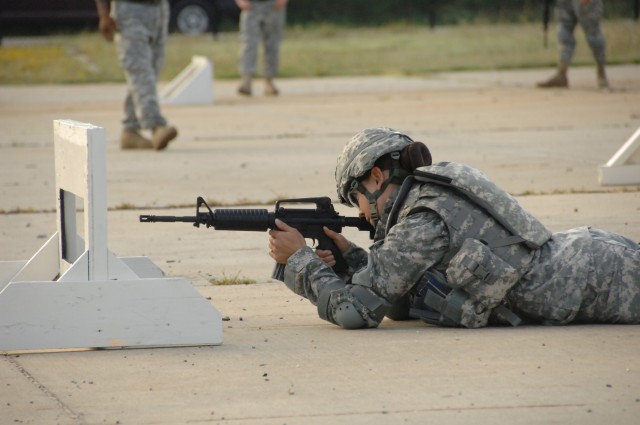

It is this inherent trait that can be used by the soldier to rapidly and accurately engage targets. When the eyes are shifted to a new object or feature, the finger, hand, and arm also shift to this point. An impulse from the brain causes the arm and hand to stop when the finger reaches the proper position. When a soldier points, he instinctively points at the feature on the object on which his eyes are focused.
ARMY AIM SCORE MANUAL
II, US Army Field Manual 23-25, Combat Training With Pistols & Revolvers: The one thing that point shooting methods have in common is that they do not rely on the sights, and they strive to increase the shooter's ability to hit targets at short range under the less-than-ideal conditions expected in close quarters, life-threatening situations, self-defense, and combat situations.Īimed point shooting employs humans' innate ability to point accurately at targets in such a way that the shooter can use that ability to hit targets with a firearm. Basis for the use of aimed point shooting Video showing aimed point shooting being used to shoot at and hit a string of aerials (pop cans tossed into the air at a distance of 3 meters (9.8 ft) The issue of using sight-reliant shooting, which relies on the use of the sights for aiming in close-quarters combat situations, versus point shooting, which does not rely on the sights for aiming in close quarters combat situations, has been debated since as early as 1835.

The modern technique is also known as "sight-reliant shooting" or "sight shooting". Later sight-reliant methods include Jeff Cooper's modern technique method which became popular after World War II. Fairbairn and Rex Applegate advocated point shooting, while many experts later in the century advocated the use of sights. Įarly 20th century shooting experts such as William E. Several US patents have drawings showing the method used with firearms: US Patent # 694969 issued Mar. The United States Army's first instructional manual on the use of the M1911 pistol specifically mentions it, but in a cautionary way due to the design of the slide stop: the slide stop pin protrudes out from the right side of the pistol, and if depressed when the gun is fired, the M1911 can jam.
ARMY AIM SCORE MANUALS
Mention of the use of the middle finger can be found in books from the early 1800s up through the 20th century: 1804, 1810, 1816, 1829 1835, 1885, 1898, 1900, 1908, 1912, and in many other military manuals on the M1911. The method employs the use of the index finger along the side of the gun to aim the gun, and the middle finger is used to pull the trigger. One point shooting method, referred to as aimed point shooting, has been used and discussed since the early 19th century. With sustained practice, a shooter can develop a subconscious hand-eye coordination utilizing proprioceptive reflex, minimizing the concentration required for effective shooting. By developing a muscle memory for a given weapon, the shooter can become so accustomed to the weapon's weight and balance in its typical shooting position as to remain relatively accurate without needing to focus on the sights to aim. Point shooting is also a technique used by trained archers and marksmen to improve general accuracy when using a bow, crossbow, firearm or other ranged weapon. In close quarters combat, where life-threatening situations emerge very quickly, sighted marksmanship techniques become risky, so advocates of point shooting emphasize a less sighting-oriented style that prioritizes the tactical advantages of quick fire superiority and suppression. Emphasis is placed on fast draw and trying to score preemptive hits first. Point shooting (also known as target- or threat-focused shooting, intuitive shooting, instinctive shooting, subconscious tactical shooting, or hipfiring) is a practical shooting method where the shooter points a ranged weapon (typically a revolver or semiautomatic pistol) at a target without relying on the use of sights to aim. Shooting method where the weapon's sights are not used or relied on Side view of handgun point shooting position


 0 kommentar(er)
0 kommentar(er)
